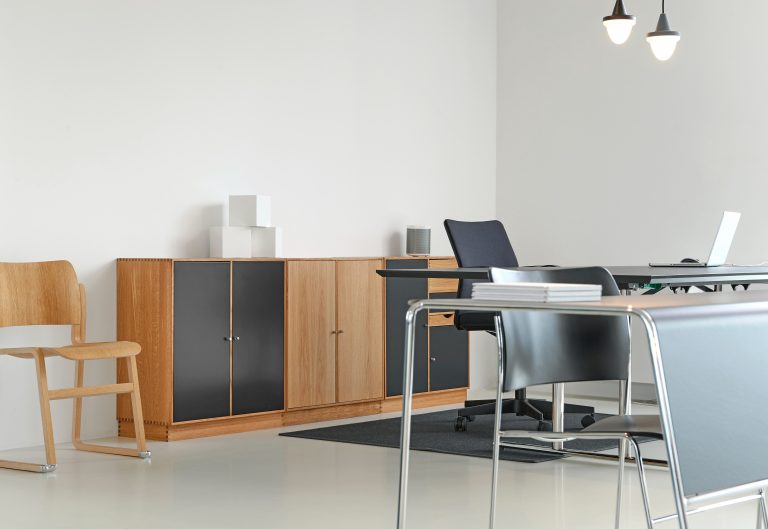Blog / Insights
What Is FF&E, and What Role Does it Play in Commercial Construction Projects?
It is referred to as FF&E (fixtures, furniture, and equipment) in short. It refers to assets that are included within a commercial building that are not a component of the building itself and are not permanently attached, but which have monetary value and are employed in the day-to-day operations of a company that occupies a commercial property. Office furniture is a good illustration of this. Other FF&E applications will be discussed in greater detail later.
There are a variety of reasons why furniture, fixtures, and equipment (FF&E) is such an important topic in commercial real estate. For starters, whether you’re buying or selling an existing business, the fixtures, furniture, and equipment owned by the company are important components of the company’s fair market value. The same concept remains true in situations involving business liquidation, such as a bankruptcy filing.
What is the significance of FF&E?
As a business owner or commercial property landlord, you should be familiar with the term “fixtures, furniture and equipment.” FF&E is an accounting and tax concept that is important to understand because items included in FF&E have depreciation calculated in a different way than the property itself and, as a result, have an impact on a company’s book value. According to the CRA, computing equipment has a useful life of five years, however an office building that contains the computers would be depreciated over a 39-year period. Examples include the following: In addition to increasing your qualifying business cost each year, FF&E deductions can assist minimize your income tax liability.
For example, let’s imagine you want to purchase a $1,500 computer for business purposes. If you deduct this expenditure using straight-line depreciation, you might claim a $300 depreciation expense deduction on your tax return each year for the next five years. Depreciation deductions for the remainder of your FF&E can be achieved in a similar manner.

Examples of FF&E
While it would be impractical to include every item that may be deemed fixed assets and equipment on a company’s balance sheet (there are a plethora of items that could be included), the following are some of the most prevalent types of assets and equipment:
- Furniture & Millwork: Tables, chairs, lamps, bookshelves, couches, and other furniture
- Electronic & AV: Computers, audio equipment, point-of-sale (POS) terminals, speakers, and other electronic devices are all examples of what is considered “high-tech.” Security systems are frequently included in the definition of FF&E.
- Items for decoration: Art, photographs, or other objects on the walls.
- Lights & Illumination: Lamps and lighting fixtures are a type of FF&E (even if they are technically attached to the building).
- Other non-product-for-sale business equipment: Gym equipment such as weights and cardio machines, for example, might be available in a fitness facility. An item such as a currency counter, for example, might be deemed fixed fixed assets in a lending organisation. Rotating garment racks are a form of asset that is likely to be included in the fixed and mobile equipment (FF&E) of a dry cleaning firm.
As a general rule, physical assets that are considered in FF&E calculations are those that are:
- Are simple to take down from the structure.
- It should have usable life of at least one year.
- Aren’t products that a business would typically sell.
In the next section, we’ll look at a few instances of items that aren’t often included in FF&E, although the vast majority of items that qualify fit these three fundamental characteristics.
What is not included in FF&E?
It’s just as important to know what items are not included in FF&E calculations. Just to name a few common asset types that aren’t considered FF&E:
- Immovable building components: Any fixed item that, if removed, would jeopardize the building’s operation is normally not included in FF&E. Toilets, faucets, and HVAC equipment, to mention a few examples, are often not included in FF&E and are regarded to be part of the business itself. This category also includes doors and windows.
- Office supplies: An asset must have a projected lifespan of one year or more to be included in FF&E. So, even though you would consider paper, pens, markers, and other office supplies to be business “equipment,” they aren’t considered FF&E.
- Consumables: FF&E does not contain any food, drink, or paper items.
- Built-in furniture: If a building incorporates built-in desks, bookshelves, or other non-removable furniture into its design, it is not considered FF&E.
- Intangible assets: This should go without saying, but an asset must be a tangible piece of equipment in order to be termed FF&E.
It is also vital to note that FF&E is not the same as inventory. Assume you were looking to purchase an established restaurant business. The tables, chairs, POS terminals, and furnishings in the back office would be considered FF&E assets for the company. Any products that the business would normally sell (for example, the bottles of whiskey in the bar’s stockroom) would not be recognized as FF&E and would instead be accounted for separately as part of the firm’s current inventory.
Contact Us
Looking for more interior design insights? Our team is here to help!
We’re here to help our people, our clients, and our communities achieve their ambitions. Let us know how we can help, or what you’re looking for, and one of our experts will be contact you promptly
